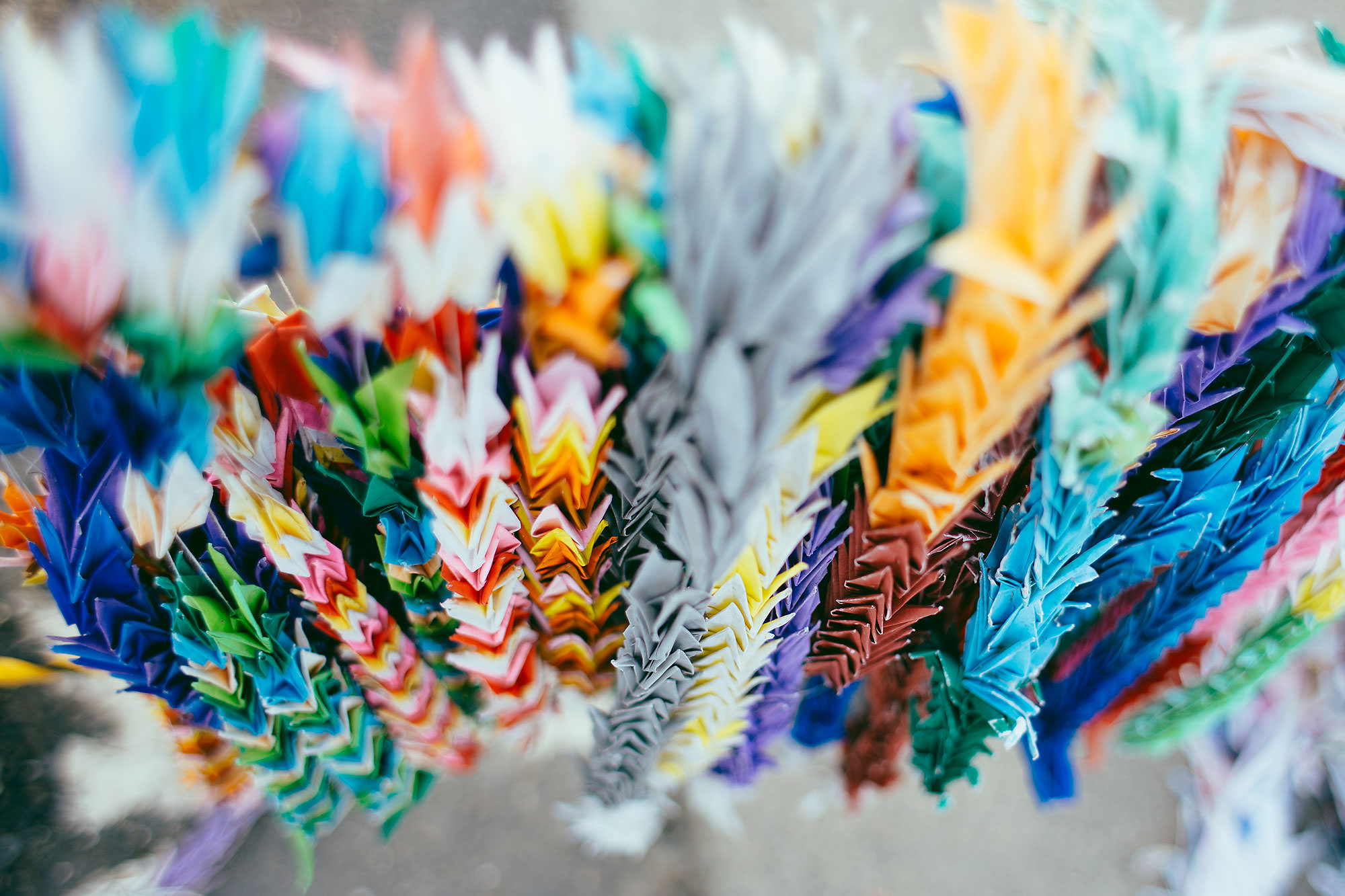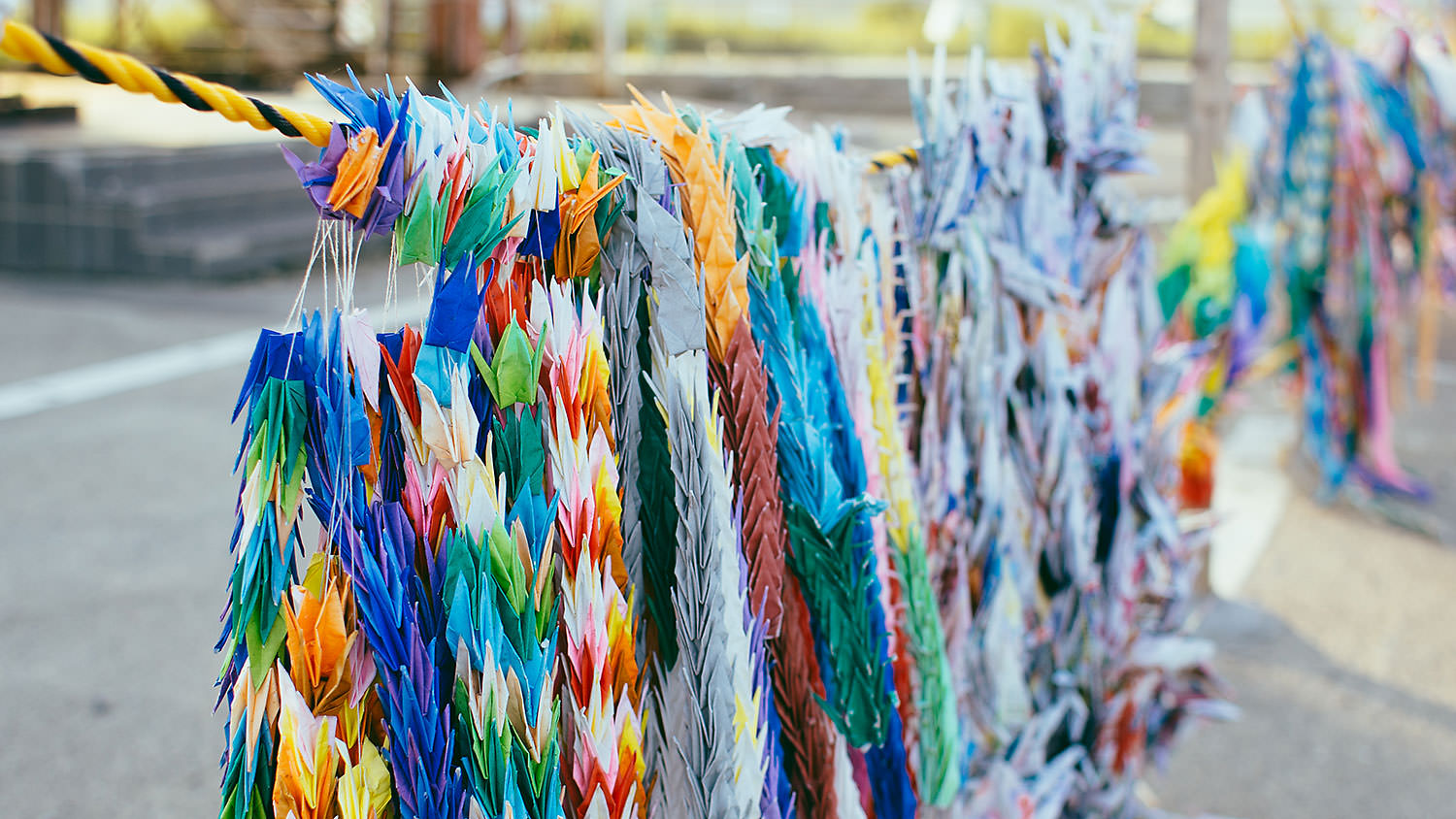
Cranes as prayer
Recently, I had the chance to officiate my friends’ wedding in Havana, Cuba. Those gathered came from numerous traditions: Catholic, Protestant, Buddhist, Jewish, atheist, Santería, Yoruba. Ten days before the wedding, the bride emailed me a draft outline, asking if I might be willing to officiate, as their original candidate dropped out. My instructions were dubiously flexible: open with an “oracion/prayer,” really “whatever you want to hacer [do].”
The couple had planned to meet me an hour and a half before the wedding to nail out the details. They arrived an hour late to the ceremony. I was not perturbed, as this is sometimes the way things go in Cuba. Nonetheless, each delayed minute felt like a year under a blistering Caribbean heat that produced deadly wages of sweat, swamping guests’ exquisite dresses and tropic maquillage.
When the ceremony began, while sweating profusely, I named the various traditions, ancestors, and peoples present in the space: all our shared prayers, I said, rise to God like smoke, carried to the divine like leaves on the wind, like the movement of a flock of birds. Later on, to mark the couple’s communal vows, I poured a bright sack of gilded paper cranes over their heads. I expected laughter but the surprised crowd gasped.
Across the world, elementary school children are taught how to fold paper cranes as part of a pro-peace education about the story of Sadako Sasaki and her death due to radiation poisoning from the bombing of Hiroshima. Many origami practitioners see the folding of these cranes as a spiritual act, akin to meditative prayer. These colorful and potent emblems continue to spill across the world by the thousands as minute liturgies of hope and peace — crossing borders, blessing sites of historic violence, embellishing cemeteries and school classrooms.
Moms and CATS and Dogs
I first learned how to pray from my mother. Dad wasn’t a believer at that time, so my mom taught us how to talk to God on the nights she wasn’t working the late shift on highway patrol. “Now I lay me down to sleep, I pray the Lord my soul to keep ... God bless everyone in the world: poor people, sick people, everyone in the hospital, aunts, uncles, grandmas, grandpas, everyone in our family, and please help mommy’s friend Gerry.” My mother would then open the floor for other requests.
I learned a different framework for prayer at a winter Korean church camp. Although I am not Korean, in middle school I joined my friend Hans’s church for a weekend of snowballs, small groups, sledding, and somber preaching. During Bible study, our adult leader handed us yellowing fliers introducing us to CATS: Confession, Adoration, Thanksgiving, and Supplication. This was a way to honor God, and develop a richer and more intimate prayer life with the Creator.

When I returned home, I found out that my black Labrador had died. My parents had adopted Nikko (Japanese for “daylight”) as a puppy at my birth, a move that almost certainly consigned me to an intense experience of adolescent grief. Nikko’s death during my quick absence turned my mourning into theodicy. I was angry, on all sides — at myself, at my parents, at church, and maybe even at God, too.
I have wept and raged in panicked prayer many times since that day. I have stepped outside of the ways I was taught to talk to God, sure foundations that I knew could hold my emotional weight. Daring to bring all of myself before the Lord, without censorship, has sometimes felt like striking out on a fragile limb, treading a waxy, vestigial surface that could collapse under me at any moment.
Private and Public Models
In daily life, I have seen how prayer dwells along our most intimate rhythms, limning the sacrality of the quotidian — during meal times and bedtime, intimate moments and whispered prayer-curses, compline and vespers — these steady supplications can remind us that the private everyday is brimming with holiness.
Prayer can also be a very public affair. “I speak to God in public,” declares Chance the Rapper in his “Blessings (Remix)”. Jesus, notably, appears to discourage such behavior in the Gospel of Matthew, teaching his followers not to pray aloud in corporate worship or on public streets. Instead, Jesus says, “when you pray, go to your room and shut the door”, and there pray to God in secret.
In all fairness, Jesus largely doesn’t follow his own advice. In John’s Gospel, after publicly weeping over his friend’s death, Jesus himself speaks directly to God in front of Lazarus’ tomb, thanking his Father for always hearing his prayers. Clearly, not all public prayer is to be avoided.
But perhaps one of the reasons we are warned against public displays of prayer is because of prayer’s potentially destructive power. Like most paper, prayer can draw blood if angled properly. Talking to God in public can be an act creased toward destruction, shearing through human dignity and wholeness. Prayer has been weaponized to drum up hatred for the immigrant and the poor, to invoke idolatrous national greatness, to celebrate so-called “reparative therapy”, which shames queer people into believing that our sexualities need to be replaced with respectable heterosexism.
Prayer is frequently used to capture public attention on many street corners. The rallying cry of “reinstating public prayer” serves as a frequent battleground in U.S. politics. Public prayer also surfaces in circumstances of great emotion and transition, events which may have little to do with formal religious practice. This can be witnessed in funerals and marriages, and also after a massive and sudden occasion of human violence. Prayer is the language in which our greatest loves, losses, and atrocities are broadcast to the world, through worship, pixel, and protest.
President Barack Obama’s critique after a mass shooting that “our thoughts and prayers are not enough” pointedly questioned this pattern. What better frameworks, other than broadcasting distant sympathies, exist for addressing great violence? How will we turn our earnest prayers into determined action?
Praying the Lumps in Our Throats
From my mother’s nocturnal rhymes, to CATS, to the formal Roman Catholic petitions I was catechized into, the frameworks that others handed me for prayer have been helpful signposts on my journey into knowing God personally. These tools can be incredibly helpful. But, of course, there are other angles and shapes to discover as well.
Just as in the hands of a confident artist, origami paper holds endless possibilities, infinite dimensions and depth; so it is with the life of prayer. Prayer can be creased for sharp and destructive purposes, or directed toward healing and peaceful ends.
Scripture tells us that Jesus said “pray in this way”, and gave us the “Our Father”. Yet we do not insist upon this sole prayer, cordoning off our worship imagination, dryly following the same verbal creases at the exclusion of all others. Instead, we take this model, we let it fuel and ground us, and we continue to innovate as God continues to graft living truths into our hearts.
The Colombian artist Doris Salcedo has said that her work is primarily about “that lump in your throat”. Salcedo’s sculptures reckon with the loss and anguish of los desaparecidos (the disappeared), urging viewers to press into that which frightens and that which lies unnamed. Similarly, we must pray for what unsettles us, what disorients — those open wounds others have papered over, those lumps in our throats. We must allow ourselves bold, turbulent prayer that questions our actions and values, that addresses our deepest fears, dreads, discomforts, and doubts.
Prayer can either catalyze or sedate, stir up righteous anger or soothe a battered spirit. Honest prayer is accessible to us at all times. It is our connection to that ground, that source of being, that agent of hope we worship as God in Christ. As we talk to God in public and private, may we do so with all the great passions that number our days, naming the joys in our hearts and the lumps in our throats.

